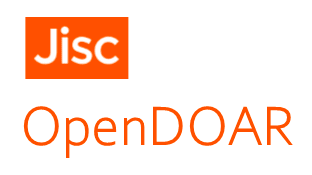| dc.creator | Serra Pajares, Javier | es |
| dc.creator | Crespo Márquez, Adolfo | es |
| dc.creator | Gómez Fernández, Juan Francisco | es |
| dc.creator | Sola Rosique, Antonio | es |
| dc.date.accessioned | 2020-03-18T11:44:21Z | |
| dc.date.available | 2020-03-18T11:44:21Z | |
| dc.date.issued | 2019-05 | |
| dc.identifier.citation | Serra Pajares, J., Crespo Márquez, A., Gómez Fernández, J.F. y Sola Rosique, A. (2019). Analysis of the impact of the Asset Health Index in a Maintenance Strategy. En Critical Service continuity, Resilience and Security: Proceedings of the 56th ESReDA Seminar (120-135), Linz, Austria: Publications Office of the European Union. | |
| dc.identifier.isbn | 978-92-76-13359-9 | es |
| dc.identifier.uri | https://hdl.handle.net/11441/94242 | |
| dc.description | Hosted by the Johannes Kepler University, Linz, Austria. May 23-24, 2019
- European Safety, Reliability & Data Association (ESReDA) | es |
| dc.description.abstract | During many years, asset management methodologies used in industry were focused
on knowing and analysing the operational control of the daily work and the impact of
the maintenance on the availability. Later, the costs turn into the priority, and
strategies were focused on assesses a longer lifecycle and optimizing processes and
contracts. Finally, recent normative have included concepts as “knowing and
managing the risks” and the target is to prioritize the maintenance tasks to the
critical assets. However, taking a balanced asset management model for the
operational environment, quite a lot of facilities of Oil & Gas sector are reaching the
end of their initially estimated lifecycle. New challenges are related to extend the life
of the main items of the facilities or at least, to find the optimal replacement moment
that guarantees that the maintenance strategy is being optimized.
Asset Health Index methodology considers a theoretical lifecycle of an item, in which
depending on the proximity to the end of the useful life, the probability of failure
increases. But take this theoretical lifecycle as a base, different operation location
factors or O&M aspects can modify this period. All these factor are quantified and
permit us to calculate a new theoretical profile.
This paper is about assess the impact of the AHI into the maintenance strategy
optimisation. AHI enables us to compare future alternative cost profiles and assess
the impact in the failure probability of the item. As a result, we are able to know the
risk that is taken when we enlarge the operation of an item, and the impact in the
operational costs. | es |
| dc.format | application/pdf | es |
| dc.format.extent | 16 p. | es |
| dc.language.iso | eng | es |
| dc.publisher | Publications Office of the European Union | es |
| dc.relation.ispartof | Critical Service continuity, Resilience and Security: Proceedings of the 56th ESReDA Seminar (2019), pp. 120-135. | |
| dc.rights | Attribution-NonCommercial-NoDerivatives 4.0 Internacional | * |
| dc.rights.uri | http://creativecommons.org/licenses/by-nc-nd/4.0/ | * |
| dc.subject | Asset Management | es |
| dc.subject | Maintenance strategies | es |
| dc.subject | Lifecycle | es |
| dc.subject | Asset condition | es |
| dc.title | Analysis of the impact of the Asset Health Index in a Maintenance Strategy | es |
| dc.type | info:eu-repo/semantics/conferenceObject | es |
| dcterms.identifier | https://ror.org/03yxnpp24 | |
| dc.type.version | info:eu-repo/semantics/publishedVersion | es |
| dc.rights.accessRights | info:eu-repo/semantics/openAccess | es |
| dc.contributor.affiliation | Universidad de Sevilla. Departamento de Organización Industrial y Gestión de Empresas I | es |
| dc.identifier.doi | 10.2760/23760 | es |
| dc.contributor.group | Universidad de Sevilla. TEP134: Organizacion Industrial | es |
| dc.publication.initialPage | 120 | es |
| dc.publication.endPage | 135 | es |
| dc.eventtitle | Critical Service continuity, Resilience and Security: Proceedings of the 56th ESReDA Seminar | es |
| dc.eventinstitution | Linz, Austria | es |
| dc.relation.publicationplace | Luxembourg | es |
 Analysis of the impact of the Asset Health Index in a Maintenance Strategy
Analysis of the impact of the Asset Health Index in a Maintenance Strategy















